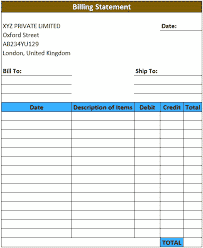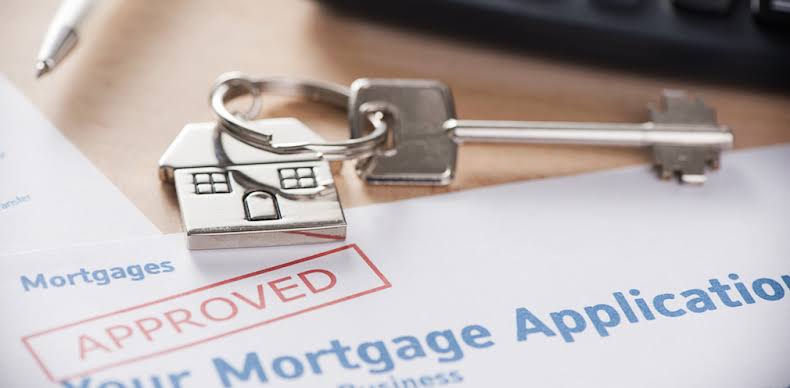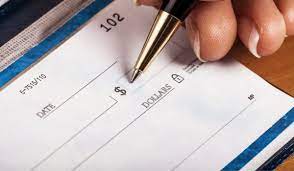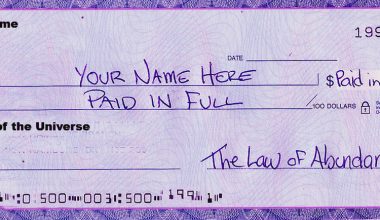Cardholders receive a “billing statement” each month, which is a monthly report of both debit and credit activity from credit card companies. It thus provides information on recent transactions, minimum monthly payments outstanding, and other relevant data. Here is a template and an example of your FPL billing statement that you can use as a guide.
What Is A Billing Statement?
A “billing statement” is a monthly credit card statement that outlines account activities for the previous month. There is a list of all orders and expenditures on the bill. It displays the account’s current balance as well as the deadline for paying the account to avoid financial penalties.
In other words, a billing statement is a report sent to consumers on a regular basis. It displays a transaction history, balance due, and other important data. They’re normally sent out towards the end of a billing cycle, which lasts around a month.
Different forms of billing statements are available. Medical billing statement templates, itemized billing statement templates, and others are among them. This statement is only available online or by mail.
It can also include your former balance, payments, and total transaction amount. This will tell you how much you need to pay by the deadline. Hence, the minimum amount due as well as the due date will be shown on this statement. This data is helpful in order to prevent late penalty interest charges.
The following information can be seen on billing statements
- The minimum amount of payment that is needed
- Purchases made in the previous month
- Any late payment penalties?
- Withdrawals have been made.
- The amount of interest charged on the unpaid balance
- The entire amount which is owed as of the statement’s date
- The needed minimum payment
- The minimum payment is due on this day.
Understanding Your Billing Statement
However, different sections are frequently included in such remarks. There is special information in each of these sections. One portion of a credit card statement, for example, will provide certain information.
There are thus three primary sections to the Billing Statement:
1. A Receipt for Remittance. To guarantee correct credit to the account, please include this component as well as the student’s ID number on any checks or money orders. The updated balance due date will be printed in the upper right corner of the billing statement.
2. A summary of the Account. This section provides a quick overview of account activity.
3. A Part With Detailed Line-Item Information. This section will detail every charge, credit, or refund.
Other item lines to be a part of the fees and transactions page includes the following:
1. Submitted Activity: The billing statement’s creation date
2. Account Balance Prior: The account balance at the period from the last billing statement.
3. Charges Net: After the last billing statement, new charges and returns appeared on the account.
4. Net Actual Aid and Payments: Since the last billing statement, the account has received new payments, financial aid, and other credits.
5. Account Balance Update: This is the current actual account balance at the moment the billing statement was created
6. Expected Assistance: The total amount of financial help that will be credited to your account. Please keep in mind that it is the student’s responsibility to ensure that all required applications and documents are submitted in order for financial aid to be posted to their account.
7. Change Amount Expected: This is the estimated balance due on the student’s account at the time the billing statement was created.
Making Use of a Billing Statement
Billing statements can be useful for a variety of purposes. Among them are:
- Easy customer account management
- Invoice tracking
- Billing in general
This template may appear simple, yet it contains all of the most essential components of such a statement. Here are some additional recommendations and guidelines for handling a billing statement:
- It is not necessary to use a statement number. The statement date is usually sufficient.
- You can carefully check the current balance, even though it should appear on the sheet. Calculating the current balance is simple. Simply take the total of all payments and subtract it from the total of all sums.
- You can expand the account activity by adding extra rows. Simply place the new rows above the “current balance” section. This will prevent you from changing the balance formula. (thedentalspa)
- You do not have to send your customer an Excel spreadsheet file. Deliver a PDF file if you decide to send billing statements without paper. This will ensure that your customer can open the document.
- If you would like to make hard copies, print several copies. Send one copy to your customer and keep the other in your records. In this manner, you may readily refer to the duplicate.
Lastly, once your customer gets the billing statements, he or she must decide how to use the details included within. Something thing to remember is to send the statement out before the due date. If your consumer gets the papers the day before he is expected to pay, he may not be pleased.
Reading Your Statement of Account
A billing statement is a document that clients and customers receive on a regular basis. Within a specific period, it displays prior balances, recent transactions, and other data. It is important to note that the client and seller’s business addresses would be included in a billing statement template. The statement date, the customer’s reference number, and other information are normally included. It would also provide information on how much the customer owes the company.
Billing statements are usually issued by firms that charge their customers on a regular basis. They’d act as a reminder for any outstanding invoices. However, there are some elements of the statement that you may find difficult to read.
Here are some tips to help you better understand your statements:
#1. Account Overview
This section will provide you with a fast overview of your account. It contains your account/customer number as well as the total amount owed to you. It does include the minimum payment amount and the deadline. while This may also provide meter numbers and your service address in some circumstances.
#2. Information on Current Bills
This section would include all of your recent transactions as well as any outstanding invoices. It would include the entire amount you must pay to the company.
In some circumstances, this section will also include all of your current bill’s energy expenses. It would include a detailed breakdown of all charges and fees you owe the company.
#3. History
This section offers a summary of the data from your last statement. If you’ve paid off your previous loan in full, it should show up here. If you don’t, the pending balance will be in addition to your current billing statement.
Billing statements can provide a lot of information. You must read and comprehend the entire sentence, regardless of its purpose. Make sure you’re just paying what you owe before you start making payments. This section also may alternatively be displayed as a graph. It would display the difference between your current and prior consumption levels.
#4. Charged With Energy
On specific billing statements, this section appears. It’s frequently difficult to read and comprehend. It includes the most basic customer service fees. It would also include data on management and billing expenses.
Also, it includes the actual cost of power used throughout the specified time period. If you have any questions about this section, you should contact the power company. It is preferable that you comprehend the data on your declaration. Perform these tasks prior to making your payments.
FPL Billing Statement
At the end of the year for FPL, the billing statement compares the quantity of energy you really consumed with the amount you paid. You will receive a credit on your next account if you paid more than you utilized. If you are paying less than you usually do, you will get an invoice for the difference at the end of the year.
FPL Billing statement, on the other hand, gives you more consistent electric bills by spreading out your energy costs throughout the year so that you pay around the same amount each month. Among the program’s advantages are:
- No more bill changes during hot or cold weather months.
- Monthly bills are easier to handle.
- You simply pay for the electricity you consume.
What Does an FPL Billing Statement Cost?
Most businesses do not charge their clients for billing statements. They see it as a way to make it easier for customers to plan their budgets, but it also reduces the likelihood that a customer will be unable to pay the bill during periods of high usage.
Some energy providers do charge a fee to allow their clients to use budget billing. You should thus avoid paying fees.
Advantages and Disadvantages of the FPL Billing Statement
The budget billing idea offers advantages and disadvantages. Let’s look at some of the more popular billing statement conversation points in FPL.
The Advantages Of An FPL Billing Statement
The merits of an FPL billing statement include:
#1. Budget Billing Facilitates Budgeting
Energy bills do vary from month to month, sometimes significantly. A fixed utility payment makes it easier to budget for monthly expenses.
#2. Budget Billing Allows Customers to Avoid Unexpectedly Expensive Summer or Winter Bills
Cold winters in the North and scorching summers in the South might result in astronomically expensive energy expenditures. Budget billing averages out your annual energy bills, saving you hundreds of dollars during peak usage months.
Disadvantages of an FPL Billing Statement
The following are the demerits of an FPL billing statement
#1. Budget Billing Has the Potential to Beguile Individuals Into Using More Energy
There is a disadvantage to using a budget billing system. Knowing your cost will be the same every month can give you a false sense of security. And also, this may induce you to overlook the long-term consequences of utilizing too much energy. You could be tempted to keep the heat on or the air conditioning on since you won’t have to pay the piper until the end of the year. And, if you tend to heat or cool your home more as a result of budget billing, you’ll wind up paying more.
#2. Budget Billing Might Lead to a Large Year-End Bill
If you don’t keep thorough records of your energy usage, you may find up with a large bill at the end of the year to make up for the amount you didn’t pay during the year. This can put a strain on your budget during the “make-up” month.
Budget billing may or may not suit you. It could help you budget better, or it could lead to excessive usage and consequently greater overall energy costs.
Understanding Your Weekly Bill
When you sign up for FPL Budget Billing, you will receive a monthly statement with three amounts:
- “Actual Bill” is the amount you would pay under FPL’s standard billing schedule.
- The “FPL Budget Billing” balance is the amount you owe as a Budget Billing subscriber.
- “Deferred Balance” is the total difference between your “Actual Bill” and your “FPL Budget Billing.”
We recommend that you stay on the program for at least one year in order to reap the benefits and avoid paying a large deferred debt.
FPL Budget Billing does not have an annual “true-up” period unless you close your account or discontinue the program.
Billing Statement Template
Sending a sales or service billing statement to your customers for activities of transactions that occurred in the previous month. This easily accessible template also contains a refund section for the customer to complete and submit with their payment.

A Billing Statement Template’s Common Information
Many people rely on their credit cards to make various purchases. People frequently use credit cards for everyday transactions as well as larger expenditures. On their monthly billing statements, all transactions are in the record.
But who checks their statements on a regular basis? Actually, reading over your billing statement is vital. Apart from your transaction history, it provides a wealth of useful information. The information on different types of billing statements may differ.
Also, you can personalize the template by including any relevant information. In the case of credit card statements, they would also include your credit limit. This is crucial information since you cannot exceed your credit limit.
When you receive your statement, make every effort to pay it on or before the due date, to maintain track of your debts so you don’t end yourself swiping a card that’s already been out.
Read Also: RECURRING BILLING: How It Works
How to Make a Template for a Billing Statement
Some firms place a high value on making a strong template. Your hospital may require a medical billing statement template. You could require a more detailed, comprehensive billing statement template.
If you send monthly billing statements, you might need a monthly billing statement template. Whatever template you require, you can easily develop one for your company. You can either modify your template or create one from scratch by downloading it here. Here are some pointers to start with:
1. Start Microsoft Excel or any other spreadsheet program you’re familiar with. Then go there to get a billing statement template. Using a template will save you time while also giving your paper a professional appearance.
2. After you’ve loaded your template into your software, enter your company’s name. You have complete control over the font style, size, and color. Under your name, type your mailing address. Ensure that the text is simple to read and comprehend.
3. Keep in mind that you’re making a template. So far, you haven’t had to type the name of the person to whom you’re sending the bill. When you’re preparing billing statements to send out, you can include that information. However, leave the field blank on the template.
4. To include the work or purchase order number, create a blank section. Ensure the buyer can plainly see this number.
5. Evaluate the blank template first before you begin entering data. Make sure the formulas in the template you downloaded are correct. It should provide a formula that allows you to quickly calculate the overall cost. You shouldn’t have to manually add the numbers when entering them.
6. Make a sample statement after you’ve finished your blank template. Then double-check your calculations and print the document. Make sure all of the information is correct.
7. Ensure your billing statement template is presentable when you create it. You can start by downloading our template and working from there. You can begin filling in the information whenever you’re ok with your own template. Then print and give them to your customers.
What Is the Distinction Between a Statement and an Invoice?
Many individuals mistakenly believe that the terms “statement” and “invoice” are interchangeable. In reality, they are frequently used interchangeably. But the truth is that they have different meanings and purposes. Its purpose is to highlight and clarify what a person owes. An invoice, on the other hand, makes a person responsible for making a payment.
Here’s a definition of both terms to help you understand
#1. Statement
This is a visual representation of the total amount owed by a customer at any given time. It’s a snapshot of all a customer’s outstanding invoices as of the statement’s date. It usually includes data about the customer’s prior and current balances. Lastly, it can include the length of time each invoice has been in existence.
#2. Invoice
An invoice is simply a bill. Its goal is to collect money from a certain customer. It can be useful to document a transaction in the institution’s books. Also, it displays transaction information such as the item’s cost, the total cost, and the tax.
It also establishes a repayment period. So you’ll know when it’s time to pay for the company. So you see, both terms are not the same thing, but they do have one thing in common: they are all linked to payments. The invoice is more current, but the statement has more information.
Is a Billing Statement an Invoice?
Statement
This is a visual representation of the total amount owed by a customer at any one time. It’s a snapshot of all a customer’s outstanding invoices as of the statement’s date…
Invoice
An invoice is simply a bill. Its goal is to collect money from a certain customer. It can be used to document a transaction in the institution’s books.
What Is Any Type of Billing Statement?
Different forms of billing statements are available. Medical billing statement templates, itemized billing statement templates, and others are among them. This statement is only available online or by mail.
How Do I Create a Billing Statement in Excel?
Here are some pointers to get you started:
1. Start Microsoft Excel or any other spreadsheet program you’re familiar with. Then go here to get a billing statement template. Using a template will save you time while also giving your paper a professional appearance.
How Do I Find My Billing Statement?
A billing statement is a monthly statement published by credit card firms to cardholders that shows their recent transactions, monthly minimum payment due, and other important information.
Where Can I Find My Statement?
It is simple to obtain a copy of your bank statement. Your bank’s website will include all of your statements. There, you can download a PDF or request a printed copy via mail. You can also contact your bank’s customer care department for assistance.
What Are the Two Types of Billing?
The Two Varieties of Medical Coding and Billing
If you are considering a job in medical billing and coding, you should be familiar with the two types of medical billing, namely professional billing, and institutional billing.
How Do You Explain Billing Process?
In simple words, billing refers to the process of generating and sending invoices to clients and asking for payment. Invoices are documents that serve as a means of documenting business transactions and seeking payment from clients.






